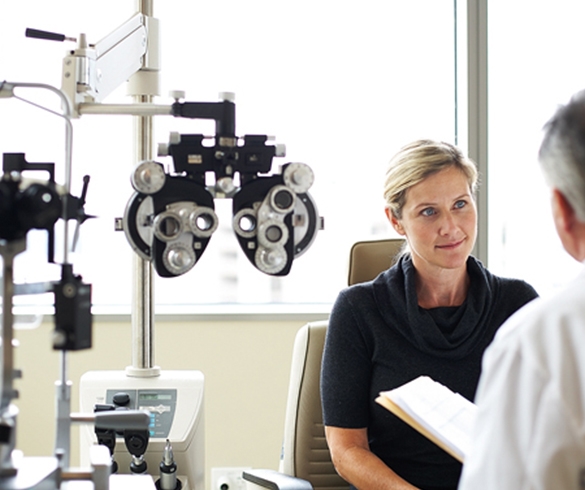
Give Your Eyes a Rest
Tips to reduce digital eye strain
Imagine how strained and tired your arms would feel if you carried around a 10-pound rock for 12 hours. That’s essentially what you’re doing to your eyes when you focus on digital devices all day.
If you’re experiencing headaches, eye fatigue, burning, stinging, redness, watering, blurred vision or even pain in the neck and shoulders after extended time on your devices, you may be experiencing digital eye strain.
A 2018 study from employee benefits company Unum found that nearly 40 percent of adults in the United States spend more than 12 hours a day looking at various digital devices, such as smartphones, tablets, laptops and television screens. In the same study, 34 percent of respondents said they feel they spend too much time on their devices.
In today’s always-on digital culture, it can be hard to escape the need to stay connected, but making a few slight adjustments can have a positive impact on your overall well-being.
Dr. Chris Wroten, an optometrist and partner at Bond-Wroten Eye Clinic, suggests a simple, easy-to-remember rule of thumb for relaxing your eyes.
“Every 20 minutes, shift your eyes to look at an object at least 20 feet away for at least 20 seconds,” he said. “This 20-20-20 rule can help relax the eyes and allow them to focus on non-digital objects in the distance.”
Other tips to reduce digital eye strain include:
- Reduce the brightness or contrast on your screen to a comfortable level. You can find these controls in the settings of your phone or tablet and on the monitor or keyboard of your computer.
- If your glossy screen is prone to glare, consider an anti-glare protector to reduce reflected light.
- Try adjusting the ambient light around you. Strategically placed lamps can produce the proper lighting and result in less visual fatigue than fluorescent or LED light bulbs.
- Maintain good posture and adjust your seating to assure you’re viewing screens at the proper angles and distances. The top of your computer monitor should sit just below eye level at about an arm’s length away from your face.
- Ensure your prescription is up to date, especially if you wear corrective lenses. If it’s been longer than a year since your last eye exam, consider making an appointment with your eye doctor.
Good visual health should be a component of maintaining your overall health and well-being. While the frequency of visits to your eye doctor typically varies for individual needs, most healthy adults should receive a comprehensive eye exam every year or two, which is included in most vision insurance plans. Eye exams can detect vision problems and allow you to adjust with corrective lenses, if necessary. This visit can also allow you to discuss any symptoms you may be experiencing, including eye strain.
Many employers offer vision insurance, and your human resources department can usually provide information about vision plan options. Vision insurance can be an affordable solution and offer benefits typically not included in a health insurance policy. It can cover routine eye exams, most likely offer a benefit for corrective lenses and may provide discounts for additional lens options. Some vision carriers, like Unum, also offer online tools or mobile apps to help you manage your benefits and find qualified, in-network eye doctors in your area.
For more information about digital eye strain, consumer research regarding device dependence or vision insurance, visit unum.com/vision.
Source:
Unum















